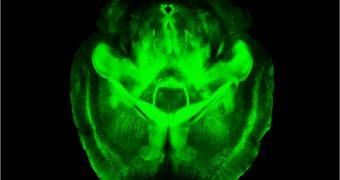Scientists with the Washington University in St. Louis (WUSL) School of Medicine have made considerable headway in explaining how attention is made possible in the human brain, in a new study. Their work has shown that the activity of different regions needs to be synchronized in order for humans to become capable of paying attention.
The same process needs to happen if we are to concentrate on performing a given task. When the brain is not able to send the synchronization command, people have difficulties concentrating and remaining mentally alert. These findings provide a deeper understanding of how the human brain operates.
WUSL investigators compare the process to turning on several walkie-talkies, and then tuning them to the same frequency in order to enable communications. This may help explain why many brain injury or stroke patients lose their ability to pay attention and focus on demanding tasks.
The study was conducted on a group of patients suffering from epilepsy. Researchers temporarily implanted a grid of sensors and electrodes inside their heads, and measured how electrical impulses flowed through their brains, PsychCentral reports.
“We think the brain not only puts regions that facilitate attention on alert, but also makes sure those regions have open lines for calling each other,” explains WUSL graduate student Amy Daitch, the first author of the study. The work is detailed in the latest issue of the journal Proceedings of the National Academy of Sciences (PNAS).
“Attention deficits in brain injury have been thought of as a loss of the resources needed to concentrate on a task,” adds the Norman J. Stupp professor of neurology at WUSL, Maurizio Corbetta, MD, who was also the senior author of the PNAS paper.
The team also proposes that brain injuries may harm a mechanism enabling the temporal alignment of responses in several areas of the brain. This mechanism was proven to play an important role in underlying attention, the group adds.
“If the cycles of two brain regions are out of alignment, the chances that a signal from one region will get through to another region are reduced,” Corbetta concludes.

 14 DAY TRIAL //
14 DAY TRIAL //